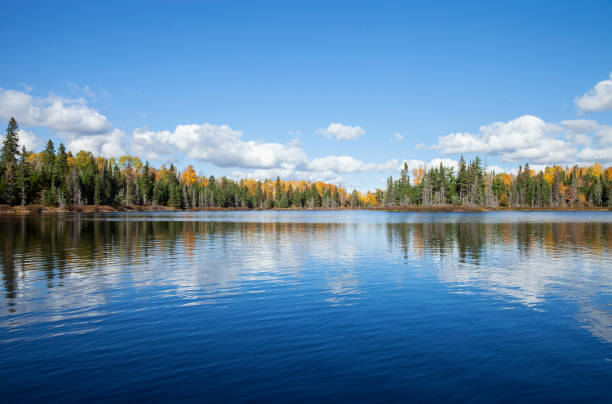
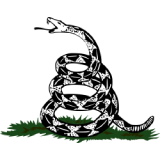
Pope John Paul II, the third-longest serving pope, passed away on this day in history, April 2, 2005, at the age of 84.
The pope had been in rapidly declining health in the last few days of his life — and made his last public appearance on March 30, 2005.
During that brief appearance, John Paul II appeared at a window and blessed a crowd of pilgrims assembled at St. Peter's Square. He attempted to speak, but was unable to get out words.
ON THIS DAY IN HISTORY, APRIL 1, 1945, US FORCES INVADE OKINAWA, LAST MAJOR BATTLE OF WORLD WAR II
About six hours before his death at 9:37 p.m., Pope John Paul II said, in Polish, "Let me go to the house of the Father," before slipping into a coma, the Vatican said in a report issued in September 2005.
The Holy See Press Office announced the pope's death.
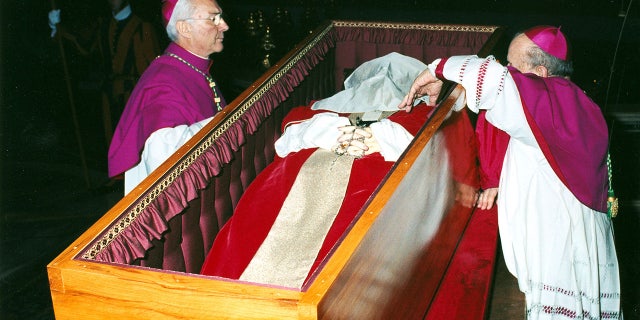
Pope John Paul II died on this day in history, April 2, 2005. His funeral was held at the Vatican on April 8, 2005. (Osservatore Romano-Pool/Getty Images)
"The Holy Father died this evening at 9:37 p.m. (2:37 p.m. EST) in his private apartment. All the procedures outlined in the apostolic Constitution `Universi Dominici Gregis' that was written by John Paul II on Feb. 22, 1996, have been put in motion," said the announcement.
POPE EMERITUS BENEDICT XVI DEAD AT 95, VATICAN SAYS
About 90 minutes before his death, Archbishop Stanislaw Dziwisz of Kraków celebrated Mass for Divine Mercy Sunday in Pope John Paul II's bedroom, said Joaquín Navarro-Valls, the then-director of the Holy See Press Office.
He was the first non-Italian to be elected pope in 455 years.
During Mass, Pope John Paul II received both the Sacrament of Anointing of the Sick and Viaticum, said Navarro-Valls.
Viaticum is a term given to the Eucharist when it is given to someone who is in severe danger of death. The term comes from a Latin phrase meaning "traveling provisions."
In this case, the Eucharist would be the sustenance to assist someone spiritually with their journey from life to death, the website Catholic Culture notes.
‘GREEN’ BURIAL ALTERNATIVES, HUMAN COMPOSTING GET A HARD ‘NO’ FROM CATHOLIC BISHOPS
Pope John Paul II's funeral Mass was celebrated on April 8, and he was buried at St. Peter's Basilica.
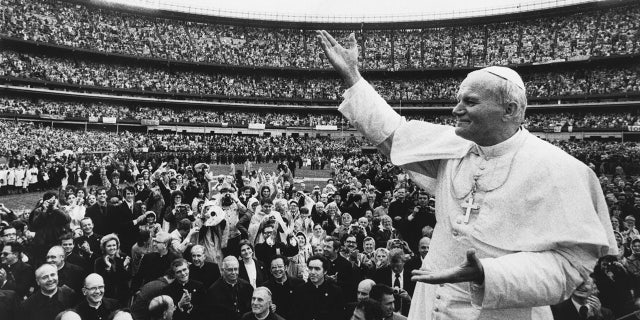
During his papacy, Pope John Paul II made over 100 international apostolic journeys, including to the United States. He is pictured above in 1979. (Getty Images)
Born as Karol Józef Wojtyła in Wadowice, Poland, on May 18, 1920, the future pope was the youngest of Karol Wojtyła and Emilia Kaczorowska's three children, his official biography on the Vatican website says.
As a child and young adult, John Paul II was heavily involved in theater, even helping to organize a clandestine theater group, said the Vatican.
John Paul II's early life was marked by tragedy. His mother died in 1929, when he was just eight years old, and his brother Edmund died in 1932 at age 26 after contracting scarlet fever while working as a doctor.
His father, the senior Karol, died suddenly in 1941.
The immense losses weighed heavily on the young John Paul II.
"At 20 I had already lost all the people I loved, and even those I might have loved, like my older sister who, they said, died six years before I was born," Pope John Paul II told the writer Andre Frossard in 1984.
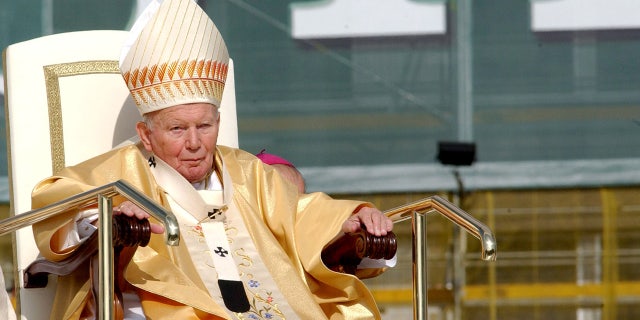
Pope John Paul II had the third-longest papacy of all time, lasting from Oct. 16, 1978, until his death on April 2, 2005. (Lalo Yasky/WireImage/Getty Images)
It was his father's death that sparked John Paul II to think seriously about the priesthood, according to reports.
His plans, however, were impacted by the Nazi's occupation of Poland during World War II, said the Vatican website.
In 1942, while Poland was occupied by the Nazis, John Paul II began studying for the priesthood at a secret underground seminary in Kraków.
ON THIS DAY IN HISTORY, FEB. 11, 1858, OUR LADY OF LOURDES FIRST APPEARS TO ST. BERNADETTE SOUBIROUS
After the war ended, he continued his studies in a more typical manner at the now-legally reopened major seminary of the Archdiocese of Kraków, as well as at the school of theology at the Jagellonian University, notes his biography.
He was ordained a priest of the Archdiocese of Kraków on Nov. 1, 1946, and subsequently began doctoral studies in Rome.
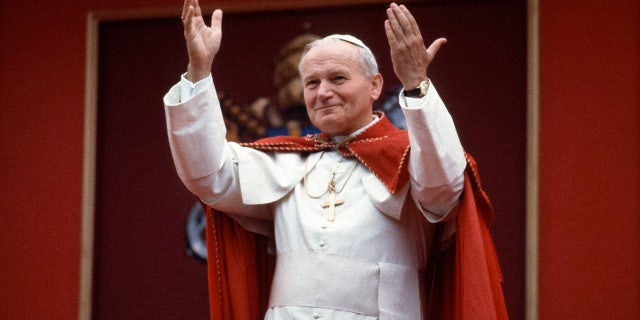
Pope John Paul II began to consider entering the priesthood following the death of his father in 1941. (Chuck Fishman/Getty Images)
On July 4, 1958, Pope Pius XII appointed the then-Fr. Wojtyła (he would later become Pope John Paul II) as auxiliary bishop of Kraków.
A little less than six years later, on Jan. 13, 1964, Pope Paul VI appointed Bishop Wojtyła as the new archbishop of Krakow.
Archbishop Wojtyła was elevated to the College of Cardinals, becoming Cardinal Wojtyła, on June 26, 1967.
INDIANA PRIEST SAYS HE'S CURED OF BRAIN TUMOR AFTER TRIP TO LOURDES: 'THANKS BE TO GOD'
In 1978, Cardinal Wojtyła participated in his first conclave, or papal election, which resulted in the election of Cardinal Albino Luciani as Pope John Paul I.
Just 33 days later, John Paul I died — necessitating another conclave. This time, the College of Cardinals elected Wojtyła as the new pope on Oct. 16, 1978, the third day of conclave, said his biography.
He was the first non-Italian to be elected pope in 455 years.

Pope John Paul II was a surprise winner of the second conclave of 1978. The formal Karol Wojtyła took the papal name "John Paul II." (Bernard Bisson/Sygma/Getty Images)
To honor his predecessor, he took the papal name "John Paul II."
As pope, John Paul II made 104 international apostolic journeys, as well as 146 pastoral visits in Italy, said his biography.
He authored 14 encyclicals, 15 apostolic exhortations, 11 apostolic constitutions, 45 apostolic letters and five books.
PRAYING THE ROSARY: UNDERSTANDING THE PRAYER THAT HELPS CATHOLICS MEDITATE ON JESUS AND MARY
He survived an assassination attempt on May 13, 1981, when a Turkish gunman shot and severely wounded the pontiff in St. Peter's Square.
At John Paul II's funeral, cries of "Santo subito," or "Sainthood now!" were heard throughout the crowd of mourners.
John Paul II credited the Virgin Mary for saving his life, as he was shot on the Feast of Our Lady of Fatima.
John Paul II forgave Mehmet Ali Ağca, his would-be assassin, during a meeting in an Italian prison.
Additionally, he "celebrated 147 beatifications, during which he proclaimed 1,338 blessed and 51 canonizations, for a total of 482 saints," said the Vatican website.
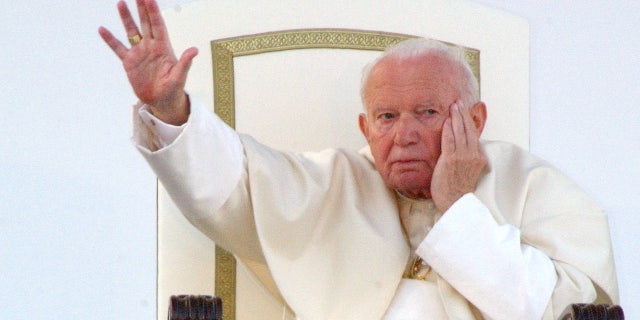
Pope John Paul II was in declining health in his last years, before passing away on April 2, 2005. He stopped making regular appearances at Wednesday audiences in January 2005, although he did make a final public appearance just three days before his death. (Lalo Yasky/WireImage/Getty Images)
One of those saints was St. Faustina Kowalska, a Polish mystic who claimed to have visions of Jesus Christ during the 1930s.
During these visions, Christ supposedly referred to himself as the "King of Divine Mercy."
Christ also reportedly gave Kowalska instructions for the Divine Mercy Chaplet, and requested that the first Sunday after Easter be dedicated to mercy, says the website Catholic Online.
John Paul II was devoted to the visions and message of his fellow Pole. When he canonized St. Faustina on April 30, 2000, he declared that the Sunday after Easter each year would be known as the "Divine Mercy Sunday."
At John Paul II's funeral, cries of "Santo subito," or "Sainthood now!" were heard throughout the crowd of mourners.
The customary five-year waiting period was waived, and Pope Benedict XVI announced that John Paul II's cause for canonization was officially opened on May 13, 2005 — the anniversary of his assassination attempt.
John Paul II was beatified on May 1, 2011, by his successor, Pope Benedict XVI.
He was then canonized, or officially declared a saint in the Catholic Church, by Pope Francis, along with his predecessor Pope John XIII, on April 27, 2014 – Divine Mercy Sunday.
